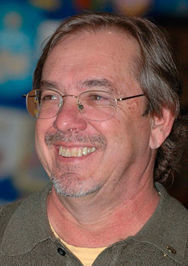As our nation just completed its 115th Congressional election with almost 120 million people voting amid thunderbolt issues such as immigration, national security and voter suppression, we took special notice of the unique viewpoint shared by a very small cohort — the continent’s Native Americans.
What could debates about immigration policies, invading caravans or border walls possibly mean to people who were here tens of thousands of years before dividing lines were ever drawn on a map?
Ironically, this happens to be Native American Heritage Month. Too bad we didn’t celebrate a month or so sooner. That way we might have been reminded who was here first and how the rest of us are all immigrants. And most of us came here without the proper paperwork.
America’s population today is 326 million and just two percent of that total (6.3 million) is counted as Native Americans. (There are 10,000 to 12,000 Sonoma County residents of such origins.)
No matter what the immigration laws say, there are only four ways any of us got here. Some of us were here before written history. Some of us came voluntarily, including lots of white Europeans. Some came involuntarily, including over a half million slaves from Africa. Lots of us were born here, even though our ancestors were not and some of us (Mexicans, Alaskans, others) stayed in their native lands while the United States annexed them.
So here we are as a “nation of immigrants” struggling to find some meaningful ways to celebrate Native American Heritage Month. Sonoma County and California do not have very long written histories when compared to our nation’s earliest settlements in the 16th century. It was less than 200 years ago that there were still numerous and diverse tribes and civilizations of indigenous people here. There were the Wappo, Pomo, Miwok, Patwins, Wintuns, Miyakmahs and others.
All these semi-nomadic hunter-gatherers lived in relative peace for as far back as 12,000 years. But in the early 19th century, Russian fur traders, Spanish and Mexican expansionists and European settlers invaded this quiet place and its people, bringing disease, massacre and enslavement.
Not much physically remains here to study during Native American Heritage Month. Most of what’s left is name-places, a few federated tribes with reservation councils, small land holdings and gaming casinos.
But there are some valuable educational displays in museums at Lake Sonoma, Sonoma State University and elsewhere. The Federated Indians of Graton Rancheria, the small Kashaya Pomo tribe of Stewart’s Point and the Lytton and Dry Creek Pomo bands remain very dedicated to preserving the slender threads of their heritage that were targets of genocide and cultural annihilation up until the last century.
The original people of Sonoma (the word ‘noma’ means ‘town’ in Mayakmah language) lived very close to nature, practicing many dances and rituals to mark the changing seasons and cycles of life and death. The Miwoks lived along the Sonoma Coast, the Laguna and San Pablo Bay. The Pomos lived in tribes that numbered almost to a hundred with each having a unique language. The tribes shared basket making techniques and a trade culture based on clamshell beads. The Wappos, Wintuns and Mayakmahs mostly lived in the eastern mountains and watersheds.
Acorns, salmon, native plants and small game were the seasonal diet of these original people. They lived in modest bark or thatched houses in village settlements throughout the Russian River watershed and slightly beyond.
If there had never been any immigrants to come here from Europe, Russia or elsewhere, one can only imagine what a modern day version of Sonoma County might look like.
For instance the swanky or quaint Healdsburg Plaza (choose your own adjective) originally was the location of the southern Pomo’s village called Kale. It existed for centuries on a sharp bend of the Ashokawna (Russian) river in the shadow of a mountain they called Tsuno (Fitch.)
It makes us wonder what the Pomo word for ‘tourist’ might be.
— Rollie Atkinson








